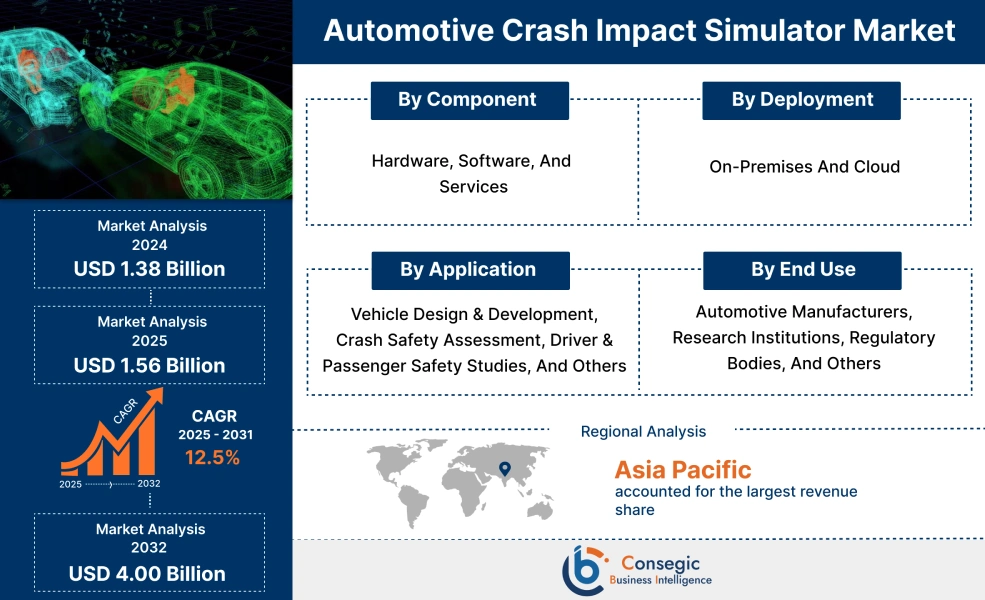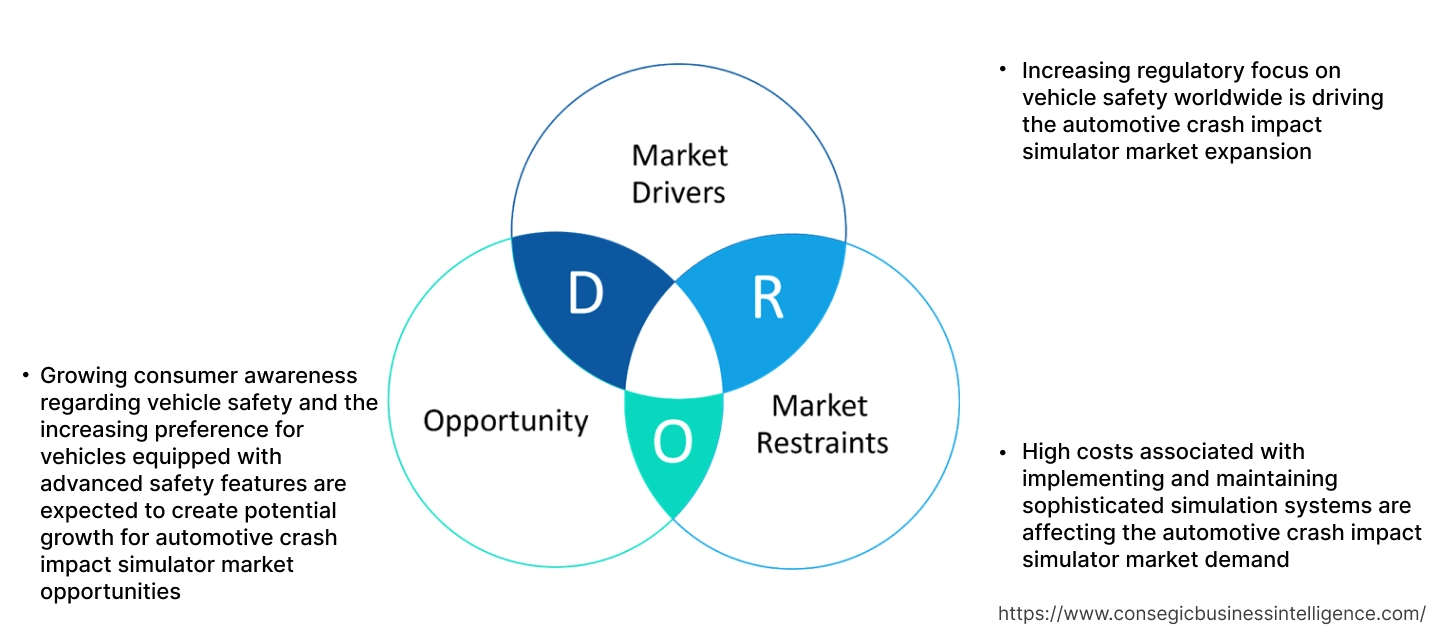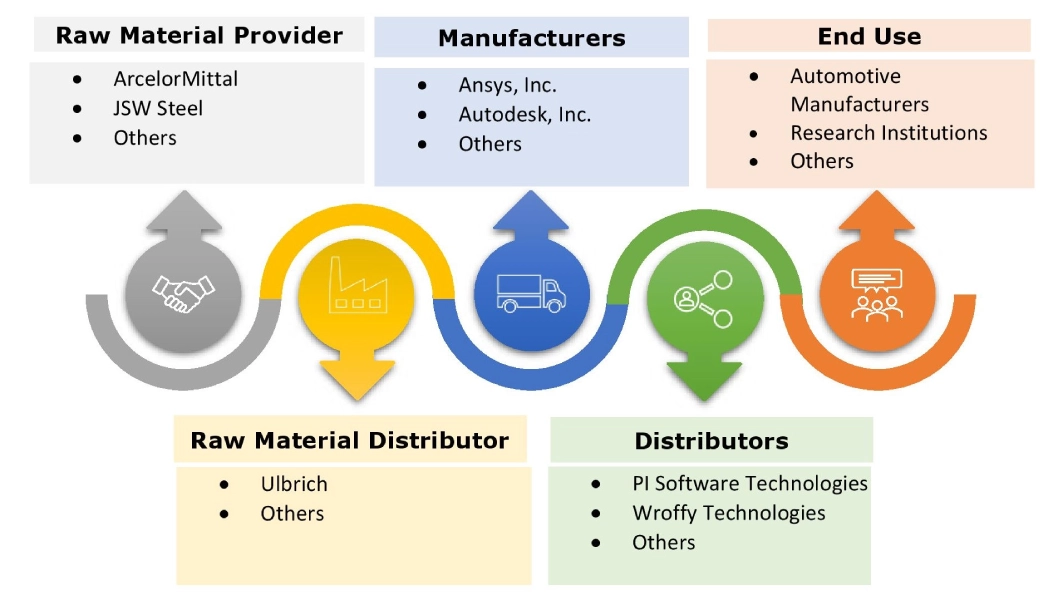Automotive Crash Impact Simulator Market Size:
Automotive Crash Impact Simulator Market Size is estimated to reach over USD 4.00 Billion by 2032 from a value of USD 1.38 Billion in 2024 and is projected to grow by USD 1.56 Billion in 2025, growing at a CAGR of 12.5% from 2025 to 2032.
Automotive Crash Impact Simulator Market Scope & Overview:
An automotive crash impact simulator (ACIS) is a system used to digitally replicate and analyze vehicle crashes, aiding in the design and development of safer vehicles. It allows engineers to simulate different crash scenarios, evaluate the impact on occupants, and test the effectiveness of safety features without physically building and destroying prototypes.
How is AI Impacting the Automotive Crash Impact Simulator Market?
AI is significantly impacting the automotive crash impact simulator market by enhancing simulation accuracy, efficiency, and automation. Machine learning algorithms analyze vast datasets to predict material behavior and deformation with greater precision, reducing the need for extensive physical testing. AI algorithms automate tasks such as scenario generation, data analysis, and even the identification of optimal design solutions, significantly speeding up the simulation process. Additionally, AI streamlines simulation workflows, generates test scenarios automatically, and improves user experience through tools such as chatbots. Further, AI models can provide real-time predictions during simulations, allowing engineers to adjust parameters and designs more efficiently. Furthermore, AI can automate the creation of complex and varied simulation scenarios, ensure comprehensive testing and cover a wider range of use cases.
Automotive Crash Impact Simulator Market Dynamics - (DRO) :
Key Drivers:
Increasing regulatory focus on vehicle safety worldwide is driving the automotive crash impact simulator market expansion
Government agencies and regulatory bodies across various regions have implemented rigorous safety standards that require automotive manufacturers to conduct comprehensive crash testing. These regulations aim to reduce fatalities and injuries in road accidents by ensuring that vehicles are equipped with adequate safety mechanisms. As a result, automotive manufacturers are compelled to adopt advanced crash impact simulators to comply with these norms effectively. This regulatory push not only boosts the adoption of simulators but also encourages continuous innovation in simulation technologies.
- For instance, the 2026 Euro NCAP safety rating and FMVSS 127 regulation will propose stringent requirements for automakers. These include advanced features, such as high-speed collision avoidance, pedestrian detection at night, and robust performance across diverse real-world and perception-challenging scenarios.
Thus, according to the automotive crash impact simulator market analysis, increasing regulatory focus on vehicle safety worldwide is driving the automotive crash impact simulator market size and trends.
Key Restraints:
High costs associated with implementing and maintaining sophisticated simulation systems are affecting the automotive crash impact simulator market demand
Crash impact simulators offer significant benefits, however, the initial investment required for hardware, software, and training can be substantial, particularly for small and medium enterprises. Additionally, the complexity of these technologies necessitates ongoing maintenance and support, which can be resource-intensive for organizations with limited IT capabilities. Furthermore, the rapid pace of technological advancements in the automotive sector presents a risk of obsolescence, as manufacturers must continuously update their simulation tools to stay competitive. Thus, the aforementioned factors would further impact the automotive crash impact simulator market size.
Future Opportunities :
Growing consumer awareness regarding vehicle safety and the increasing preference for vehicles equipped with advanced safety features are expected to create potential growth for automotive crash impact simulator market opportunities
Consumers prioritize safety when purchasing vehicles, leading manufacturers to incorporate cutting-edge safety technologies in their offerings. Crash impact simulators play a crucial role in validating the effectiveness of these technologies, such as airbags, crumple zones, and collision avoidance systems, before they are integrated into the vehicles. This consumer-driven demand for enhanced safety features is expected to sustain the growth of the automotive crash impact simulator market over the forecast period.
- For instance, Siemens’ Madymo software, plays a crucial role in automotive crash impact simulation and enhancing consumer safety. It simulates occupant behavior during crashes, including pedestrian safety, and is used to develop and validate safety features.
Thus, based on the above automotive crash impact simulator market analysis, growing consumer awareness regarding vehicle safety and the increasing preference for vehicles equipped with advanced safety features are expected to drive the automotive crash impact simulator market opportunities.
Automotive Crash Impact Simulator Market Segmental Analysis :
By Component:
Based on component, the market is segmented into hardware, software, and services.
Trends in the component:
- As automotive technology advances, the integration of AI and machine learning into crash testing systems is expected to enhance their predictive capabilities, offering even more precise assessments of vehicle safety.
- Software provides the analytical framework, hardware offers the necessary tools to execute simulations physically, and services ensure the seamless operation and maintenance of these systems. This interconnected ecosystem is pivotal in delivering comprehensive automotive crash simulator solutions to the automotive industry.
- Thus, based on the above analysis, these factors are driving the automotive crash impact simulator market demand.
The hardware segment accounted for the largest revenue share in the year 2024.
- Hardware components are crucial for the operation of automotive crash impact simulators. These include high-performance computing systems and specialized crash testing rigs that replicate real-world crash conditions.
- The hardware segment is witnessing innovations such as the development of more sophisticated sensors and accelerometers, which are essential for capturing data during simulations.
- The need for powerful computing resources to process complex simulations also drives the demand for advanced hardware solutions.
- Thus, based on the above analysis, these factors are further driving the automotive crash impact simulator market growth.
The services segment is anticipated to register the fastest CAGR during the forecast period.
- Vehicle crash testing services are essential for ensuring that vehicles meet the stringent safety standards set by regulatory bodies worldwide. These services involve a series of controlled tests that simulate real-world crash scenarios, providing critical data on vehicle performance and occupant protection.
- By partnering with specialized crash testing service providers, automotive manufacturers can gain access to state-of-the-art testing facilities and expertise, ensuring that their vehicles are thoroughly evaluated for safety compliance.
- For instance, TUV SUD’s crash testing services include physical crash simulations of rear, frontal, and side impacts. The services also include testing components, such as central consoles, seats, roof tanks, airbags, and trims.
- Thus, based on the above analysis and developments, these factors are expected to drive the automotive crash impact simulator market share during the forecast period.
By Deployment:
Based on the deployment, the automotive crash impact simulator market is segmented into on-premises and cloud.
Trends in the deployment:
- The growing trend towards cloud-based solutions reflects the broader shift towards digitalization and innovation in the automotive sector.
- On-premise deployment allows extensive customization of simulation software to meet the specific requirements of individual manufacturers, making it an attractive option for companies with substantial IT resources.
The on-premises segment accounted for the largest revenue share in the year 2024.
- On-premises deployment has been traditionally favored by large automotive companies due to the control it provides over data and simulation processes.
- This mode ensures that all sensitive data related to crash simulations are maintained within the company's internal servers, reducing the risk of data breaches.
- Thus, based on the above analysis, these factors would further supplement the automotive crash impact simulator market
The cloud segment is anticipated to register the fastest CAGR during the forecast period.
- Cloud-based solutions allow automotive companies to access powerful simulation tools without the need for significant upfront investment in hardware and infrastructure.
- This deployment mode offers the advantage of remote access, enabling teams to collaborate seamlessly across different locations.
- Moreover, cloud-based automotive crash impact simulators often come with automatic updates and maintenance services, ensuring that users always have access to the latest features and improvements.
- Cloud-based solutions are becoming increasingly popular among SMEs and research institutions that may prioritize flexibility, ease of deployment, and cost savings.
- These developments in the cloud deployment segment are anticipated to further drive the automotive crash impact simulator market trends during the forecast period.
By Application:
Based on application, the market is segmented into vehicle design & development,
crash safety assessment, driver & passenger safety studies, and others.
Trends in the application:
- The focus on enhancing occupant protection and minimizing fatalities in accidents propels the demand for advanced simulation.
- As logistics and transportation industries expand, the emphasis on vehicle safety is intensifying, leading manufacturers to adopt simulation technologies to optimize the design and safety features of commercial vehicles.
The crash safety assessment segment accounted for the largest revenue share in the year 2024.
- New Car Assessment Programs (NCAPs) such as Euro NCAP and Global NCAP are incorporating new tests for ADAS performance, pedestrian and vulnerable road user protection, and new vehicle types such as electric vehicles (EVs) and autonomous vehicles.
- Data from connected vehicles, including telematics and sensor data, can provide valuable insights into driving behavior, near-misses, and actual crash events, further refining safety assessments and simulations.
- For instance, Humanetics has integrated active safety, passive safety, and data acquisition systems, and provides services for spare parts to ensure that teams can continue testing for unforeseen accidents.
- Thus, based on the above analysis, these factors are driving the automotive crash impact simulator market growth.
The driver & passenger safety studies segment is anticipated to register the fastest CAGR during the forecast period.
- The widespread adoption and continuous improvement of ADAS features, such as automatic emergency braking (AEB), lane departure warning (LDW), blind-spot monitoring (BSM), and adaptive cruise control are driving the segment development.
- With the rise of autonomous and semi-autonomous driving, DMS using cameras and sensors to detect driver fatigue, distraction (e.g., cell phone use, eye movements), and inattentiveness are becoming critical. These systems aim to alert drivers or even intervene to prevent accidents.
- These factors are anticipated to further drive the automotive crash impact simulator market trends during the forecast period.
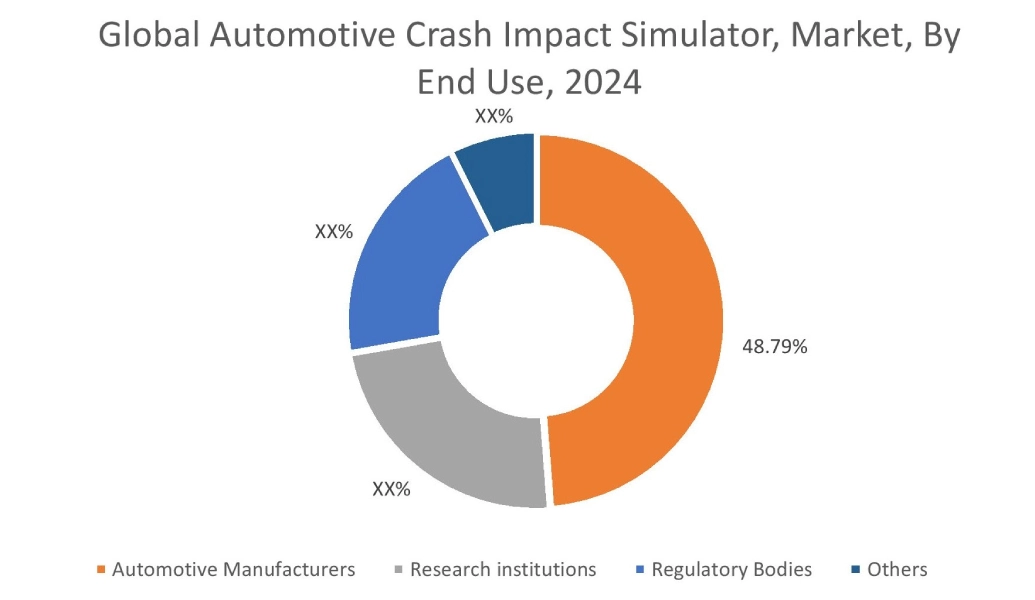
By End Use:
Based on end use, the market is segmented into automotive manufacturers, research institutions, regulatory bodies, and others.
Trends in the end use:
- The research institutions and crash research organizations utilize simulators for training and academic purposes, contributing to the development of the market.
- The ability to conduct virtual tests and simulations in R&D environments accelerates the development of new safety technologies and enhances the effectiveness of existing ones. As automotive companies prioritize innovation and safety, the R&D segment is expected to experience significant development in crash impact simulators.
The automotive manufacturers segment accounted for the largest revenue share of 48.79% in the year 2024 and it is expected to register the highest CAGR during the forecast period.
- Automotive manufacturers represent the largest segment, driven by the need to comply with stringent safety regulations and enhance the safety features of their vehicles.
- These manufacturers utilize crash impact simulators to conduct virtual tests and optimize vehicle designs, ensuring they meet the necessary safety standards before production.
- As the automotive industry faces increasing pressure to improve safety and reduce emissions, manufacturers are investing heavily in simulation technologies to stay ahead of regulatory requirements and consumer expectations.
- Thus, the above factors are driving the global market trends.
Regional Analysis:
The global market has been classified by region into North America, Europe, Asia-Pacific, Middle East & Africa, and Latin America.
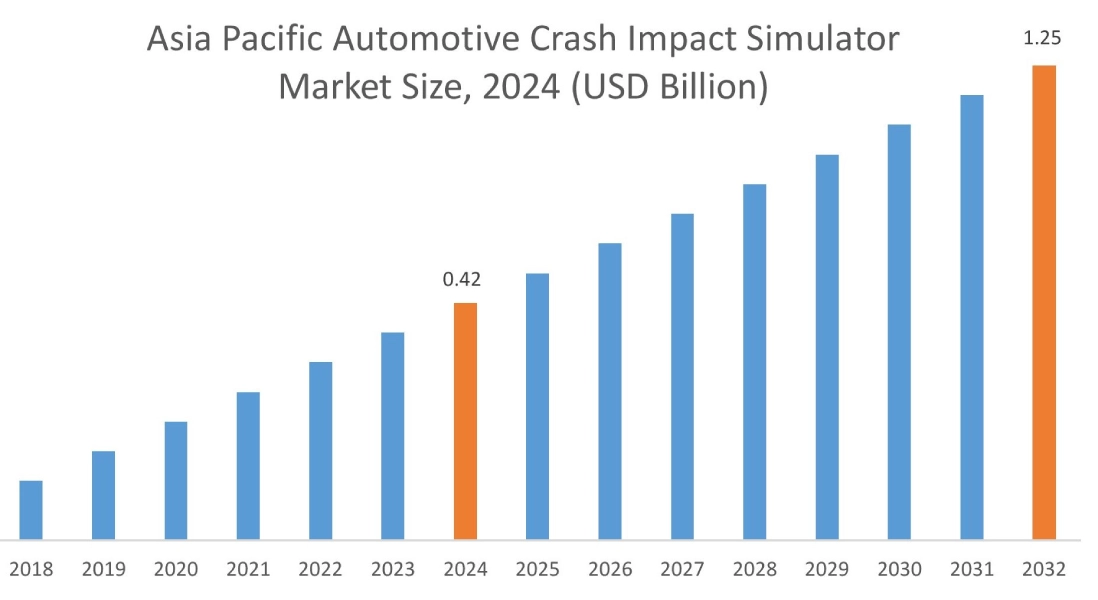
Asia Pacific automotive crash impact simulator market expansion is estimated to reach over USD 1.25 billion by 2032 from a value of USD 0.42 billion in 2024 and is projected to grow by USD 0.47 billion in 2025. Out of this, the China market accounted for the maximum revenue split of 37.81%. The regional market highlights significant growth potential across various geographies, driven by diverse factors such as regulatory standards, automotive production, and technological advancements. This growth is primarily attributed to the booming automotive industry in countries such as China, India, and Japan, where increasing vehicle production and sales are driving the demand for advanced safety solutions. Further, the presence of numerous automotive manufacturers and research institutions, coupled with stringent safety regulations, further contributes to the region's market development. These factors would further drive the regional automotive crash impact simulator market during the forecast period.
- For instance, in March 2023, Toyota unveiled its new software program, THUMS (Total Human Model for Safety), designed to simulate and analyze injuries from vehicle crashes. This advanced tool enhances the precision of computerized crash simulations, ultimately aiding in the creation of more effective safety features for vehicles.
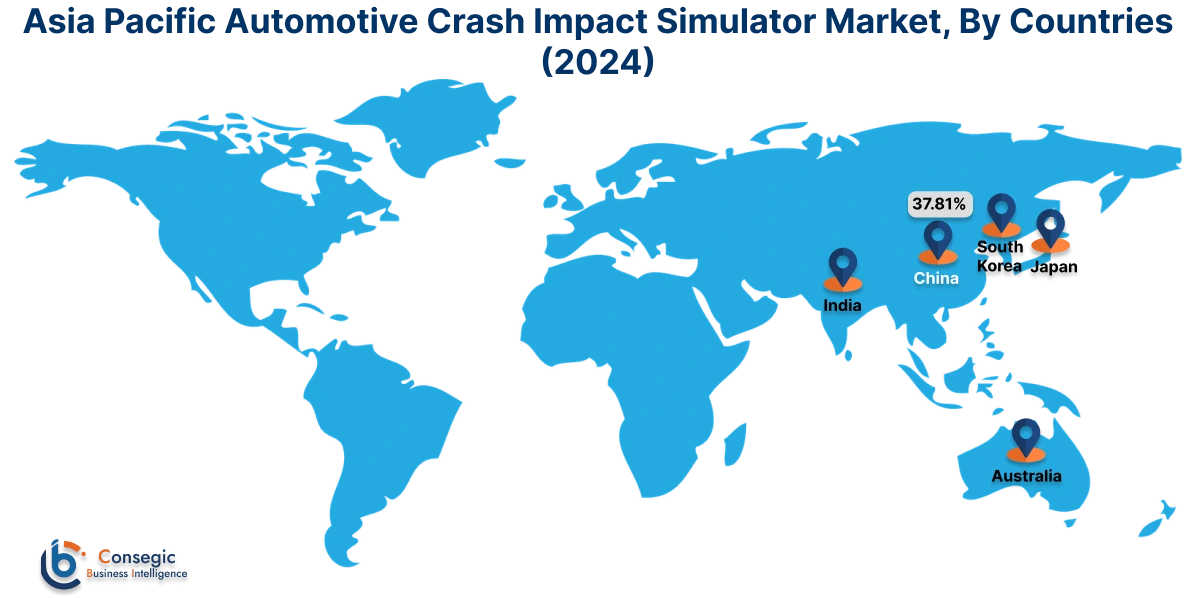
The North American market is estimated to reach over USD 1.38 billion by 2032 from a value of USD 0.48 billion in 2024 and is projected to grow by USD 0.54 billion in 2025. The United States and Canada are key contributors to the regional market, with automotive manufacturers investing in simulation technologies to comply with rigorous safety regulations and meet consumer demands for safer vehicles. The region's emphasis on innovation and technological advancements, particularly in autonomous and electric vehicles, presents significant opportunities for the adoption of cutting-edge crash simulation solutions. These factors would further drive the market in North America.
According to the analysis, the automotive crash impact simulator industry in Europe is expected to witness significant development during the forecast period. The European Union's stringent safety regulations and the region's focus on sustainability and reducing emissions further contribute to the adoption of crash simulators. Additionally, the Latin American market has seen significant growth, with a focus on integrating advanced sensor technologies and sustainable materials into crash test barriers, aligning with global trends toward eco-friendly practices. Further, the increasing vehicle production and rising safety awareness are key factors fueling the Middle East & Africa market growth.
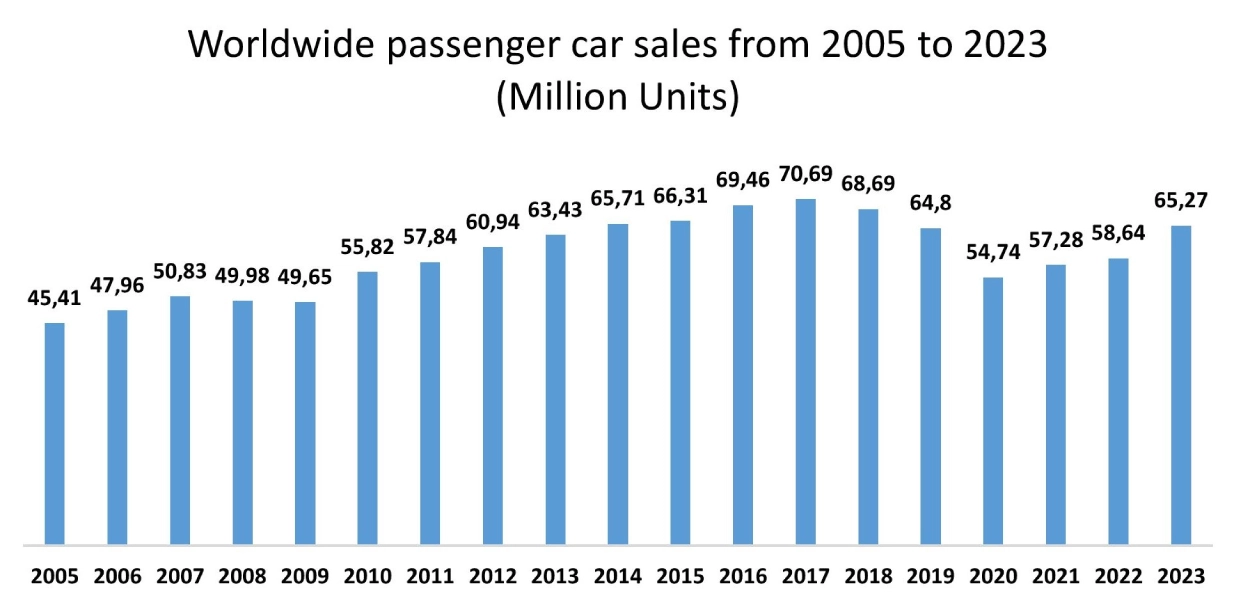
Top Key Players and Market Share Insights:
The global automotive crash impact simulator market is highly competitive with major players providing solutions and services to the national and international markets. Key players are adopting several strategies in research and development (R&D), product innovation, and end-user launches to hold a strong position in the market. Key players in the automotive crash impact simulator industry include-
- Ansys, Inc. (U.S.)
- Dassault Systèmes SE (France)
- AVL List GmbH (Austria)
- IPG Automotive (Germany)
- Ricardo PLC (U.K.)
- ESI Group (France)
- Autodesk, Inc. (U.S.)
- Siemens AG (Germany)
- Hexagon AB (U.S.)
- PTC Inc. (U.S.)
Automotive Crash Impact Simulator Market Report Insights :
| Report Attributes | Report Details |
| Study Timeline | 2019-2032 |
| Market Size in 2032 | USD 4.00 Billion |
| CAGR (2025-2032) | 12.5% |
| By Component |
|
| By Deployment |
|
| By Application |
|
| By End Use |
|
| By Region |
|
| Key Players |
|
| North America | U.S. Canada Mexico |
| Europe | U.K. Germany France Spain Italy Russia Benelux Rest of Europe |
| APAC | China South Korea Japan India Australia ASEAN Rest of Asia-Pacific |
| Middle East and Africa | GCC Turkey South Africa Rest of MEA |
| LATAM | Brazil Argentina Chile Rest of LATAM |
| Report Coverage |
|
Key Questions Answered in the Report
How big is the Automotive Crash Impact Simulator Market? +
Automotive Crash Impact Simulator market size is estimated to reach over USD 4.00 Billion by 2032 from a value of USD 1.38 Billion in 2024 and is projected to grow by USD 1.56 Billion in 2025, growing at a CAGR of 12.5% from 2025 to 2032.
Which is the fastest-growing region in the Automotive Crash Impact Simulator Market? +
Asia-Pacific region is experiencing the most rapid growth in the market.
What specific segmentation details are covered in the Automotive Crash Impact Simulator report? +
The automotive crash impact simulator report includes specific segmentation details for component, deployment, application, end use, and region.
Who are the major players in the Automotive Crash Impact Simulator Market? +
The key participants in the market are Ansys, Inc. (U.S.), Dassault Systèmes SE (France), ESI Group (France), Autodesk, Inc. (U.S.), Siemens AG (Germany), Hexagon AB (U.S.), PTC Inc. (U.S.), AVL List GmbH (Austria), IPG Automotive (Germany), Ricardo PLC (U.K.), and others.
